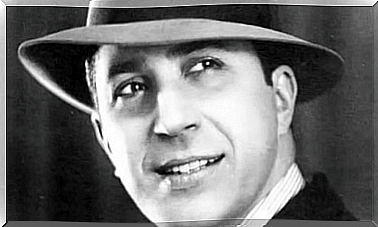Do You Know The Stockholm Syndrome?

According to an FBI investigation, 27% of people who have been kidnapped in their lifetime experience this sensation, strange as it may sound. They will harbor positive feelings towards their captors and at the same time, they may fear the authorities. Quite the opposite of what we might expect in a situation like this.
From a psychological point of view, the “Stockholm Syndrome” is considered one of the many emotional responses that can occur, due to the vulnerability and helplessness that being in captivity can produce. It is important to understand it and know when it can occur.
History of Stockholm Syndrome
It was 1973 in the capital of Sweden, when a bank robbery was carried out. The criminals were discovered, so they detained everyone who was present in the building at the time, customers and employees. The negotiation lasted several days and during that period, the hostages felt identified by the captors. This identification was given to such an extent that they helped them, withheld information and prevented the police from knowing their facial features or their names. At the moment of liberation, one of the hostages made out with his abductor while declaring his love for him. This somewhat unusual behavior was the initial event in calling the relationship of affection between the two people (captor and hostage) “Stockholm Syndrome”.
Another case where this disorder can be discussed occurred with Patricia Hearst, the daughter of a US press mogul, who was kidnapped in 1974 by the Symbionne Liberation Army. She fell in love with one of her captors and later joined the group of revolutionaries, until she was captured and sentenced (President Carter pardoned her).
How is this syndrome analyzed from the psychological prism?
These types of reactions are considered one of the many possible emotional responses that a person can present when abducted. His helplessness during captivity can lead to a feeling of affection or love for his captor, due to various factors, but above all, due to the good treatment he receives during his captivity. It is usually believed that this person (the kidnapped person) is ill, because in the minds of others there is no possibility of this feeling towards who has taken away their freedom, even momentarily.
The Stockholm Syndrome, according to experts, appears when the captured unconsciously identifies with his aggressor, because he assumes responsibility for the aggression or because he adopts certain symbols that define him. When someone is kidnapped and spends a lot of time with the people who led them to this condition, an affective current can develop in order to survive. It may or may not be voluntary, but the goal is the same: to obtain even a little control of the situation and deny the threat that is presented, as well as not to feel it. In the latter case is when we are talking about the syndrome.
In most experiences, the captured feels gratitude towards the kidnappers, they are grateful for continuing to leave them alive, being safe and sound, feeding them, being attentive to their needs (if they are hot or cold, if they want to go to the bathroom, if they are thirsty , etc). Sometimes they remember that stage as a “trance” and say that the captors were kind to them at all times.
A person who was kidnapped is immersed in a situation of helplessness, he cannot respond to what is happening to him, it is difficult for him to maintain his balance, sometimes he does not know if it is day or night and almost never where they are locked up. He tries, then, to suppress, reduce or repress that aggression, which accumulates and is directed against himself. For this reason, it can be common for someone who suffers from the “Stockholm Syndrome” to feel that they are to blame for the other’s decision to kidnap her.
We could say then that it is a defense mechanism, mostly unaware of a kidnapped person, so as not to respond to what is happening to him. Basically he defends himself against the possibility of suffering an “emotional shock”. It develops an identification with the aggressor, an absurd bond, a feeling of sympathy, liking, love, devotion, etc.
Those who suffer from this Syndrome do not feel sick or strange at all, but consider that their thinking or feeling is something normal. He perceives and is 100% sure that this is the way of thinking or feeling, because the kidnapper has treated him very well when he was in captivity. Only those who “see it from the outside” say that it is irrational behavior and that it is impossible to justify the aggressor for what he did, even if he was not violent or abusive.
In order to detect and subsequently diagnose Stockholm Syndrome, it is necessary, in the first instance, that the person has been kidnapped against their will and then shows a feeling of identification with their captors, defending them, wanting to see them, thinking like them, not offering information for his detention, avoiding badmouthing his period of captivity, etc. There may also be expressions of appreciation, gratitude and devotion, even when months and even years have passed after liberation.









